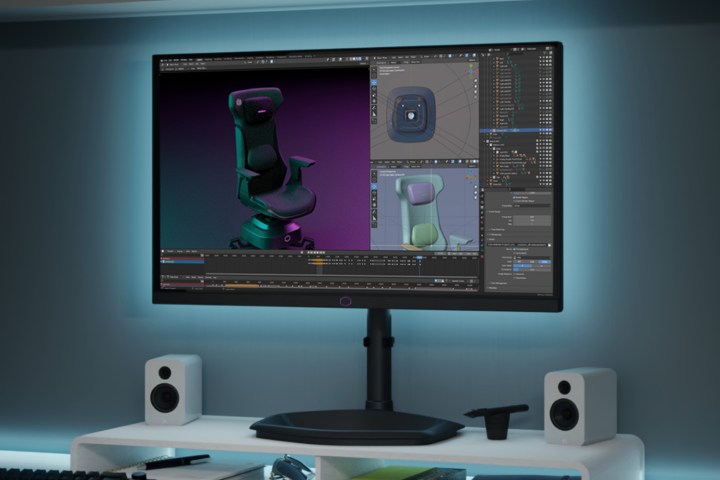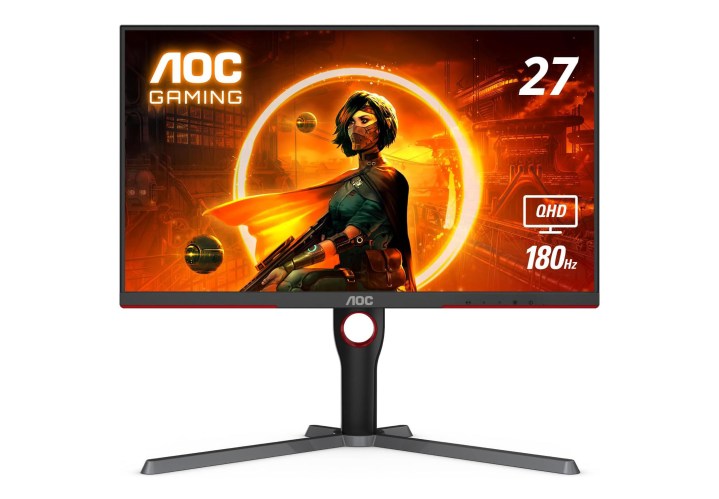
HDR-capable gaming monitors are all the rage these days. Whether they’re OLED or mini-LED, it’s finally possible to get a really killer HDR experience from your monitor. Until very recently, however, you’d be spending lots of money to do it.
Enter a new wave of mini-LED gaming monitors, with prices as low as $280, that call into question similar-priced monitors that are edge-lit or have no local dimming at all. You’d be right to be skeptical, and even though these new monitors can’t compare against some of the best gaming monitors, they’re a big leap forward for putting proper HDR monitors in front of a lot more gamers.

One of the most affordable mini-LED monitors you’ll find online is the AOC Q27G3XMN, which is a 27-inch QHD (2560 x 1440) gaming monitor with up to a 180Hz refresh rate and a fast 1ms (GtG) response time. It’s $280 price seems unbelievable for a gaming monitor that’s VESA DisplayHDR 1000 certified, meaning it should have a peak brightness of 1,000 nits. It even comes with a three-year warranty.
Now, obviously, AOC is a brand that sells moniors for cheaper in general. But as always, the devil’s in the details. Dimming zones are what allow a mini-LED panel to surpass traditional LED backlighting in contrast, producing deeper blacks and brighter highlights. This monitor, however, only comes with 336 local dimming zones.
But let’s put things in perspective. The mini-LED panel used in the Asus ROG Zephyrus G14 uses 504 dimming zones, while the newer (and larger) ROG Strix Scar 18 has 2,000 dimming zones. At the top of the line, the MacBook Pro 16-inch has 2,554 dimming zones in its mini-LED panel, for a peak brightness of 1,600 nits.
On a larger 27-inch screen, there’s a need for even more dimming zones to produce even contrast to get some half-decent HDR performance. The 4K Acer Predator X32 FP has 576 dimming zones, while the extremely high-end ViewSonic XG321UG comes with 1,152 zones.
But again, it’s the price that makes these new monitors special. We haven’t tested it ourselves yet, but one of the early reviews from Monitors Unboxed claims that this monitor provides a surprisingly solid HDR experience for the price. Predictably, the downsides of having fewer dimming zones are blooming and artifacts, specifically on bright objects in dark environments such as a cursor on a dark mode application or white subtitles in a dark scene from a movie.
If that sounds off-putting to you — fair enough. Fortunately, a variety of other mini-LED monitors make up that difference.

Take. for instance. the newly launched Cooler Master Tempest GP2711 gaming monitor. A follow-up to the Tempest G27Q, this new mini-LED monitor comes with a few tweaks. Instead of using a traditional IPS panel, it employs a VA panel to improve the overall contrast and minimize halo effects — much like the AOC Q27G3XMN.
The 27-inch panel offers a resolution of 2560 x 1440 and a 165Hz refresh rate, as well as support for the 99% sRGB and 95% DCI-P3 color gamuts. It is also factory-calibrated, and comes with TUV-certified eye comfort, a built-in KVM switch, and a special passive cooling system, all for $449 (once it becomes available for sale).
The GP2711 is rated for a brighter 1,500 nits and comes with 576 dimming zones. This takes it out of the budget territory and into a more respectable number of local dimming zones. It does come with issues of its own — as pointed out by Monitors Unboxed — but Cooler Master is already rolling out a new firmware update that is expected to improve HDR performance.
We haven’t reviewed either of these monitors, and we’ll need to test them to get a better assessment of the quality for ourselves. But the point is that mini-LED backlighting is getting a lot cheaper, and the fact that these monitors seem to produce some decent HDR is a game- changer.
We’ve already seen the price of OLED gaming monitors drop too, with the Alienware 27 QD-OLED landing at $900. Hopefully, these will get cheaper too over tim, but it seems like there will be a place for more affordable mini-LED displays in the market for many years to come.
Editors’ Recommendations
Services Marketplace – Listings, Bookings & Reviews
